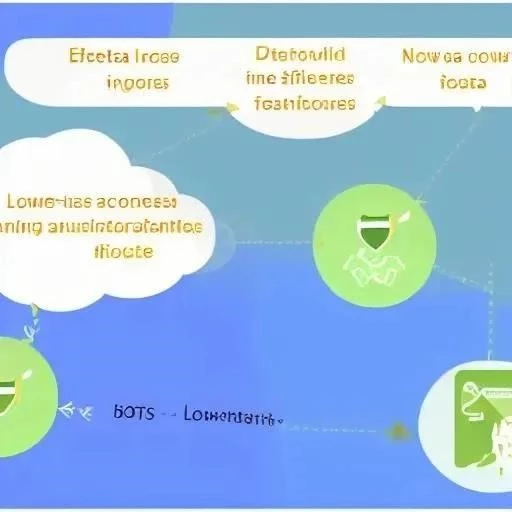Understanding the Common Internet File System (CIFS)

The Common Internet File System (CIFS) is more than just a technical term; it’s a fundamental protocol that underlies much of how we share and access files across networks‚ especially in Windows environments․ It acts as a network file sharing protocol‚ enabling applications on a computer to access files and resources hosted on remote servers․ Think of it as the language computers use to talk to each other when dealing with files over a network․ The Common Internet File System simplifies file sharing‚ printer access‚ and other network operations‚ making collaborative work much easier․
Delving Deeper: Understanding the CIFS Protocol
CIFS‚ at its core‚ provides a standardized way for computers to request and receive files and services from other computers across a network․ It operates at the application layer‚ meaning it builds upon lower-level protocols like TCP/IP to establish connections and transmit data․ This allows for seamless integration into existing network infrastructures․
Key Features of CIFS
- File Sharing: Enables users to access and modify files stored on remote servers as if they were local․
- Printer Sharing: Allows multiple users to share a single printer connected to a network․
- Authentication and Authorization: Provides mechanisms to control access to shared resources‚ ensuring that only authorized users can access sensitive data․
- Locking: Prevents multiple users from simultaneously modifying the same file‚ avoiding data corruption․
CIFS in Action: Real-World Examples
Consider a typical office environment․ Employees often need to access shared documents‚ spreadsheets‚ and presentations stored on a central file server․ CIFS makes this possible․ When an employee opens a file on the server‚ their computer uses the CIFS protocol to request the file․ The server then responds by sending the file data back to the employee’s computer․ Another common example is accessing shared network drives within a company’s internal network․ These drives‚ often used for department-specific files or project collaborations‚ rely heavily on the CIFS protocol for seamless accessibility․
CIFS vs․ SMB: What’s the Difference?
It’s easy to get CIFS and SMB confused‚ and for good reason․ CIFS is essentially a specific dialect of the Server Message Block (SMB) protocol․ SMB is the more general protocol‚ while CIFS represents a particular implementation and evolution of SMB․ Think of it this way: SMB is the language‚ and CIFS is a specific accent or dialect within that language․ Modern Windows operating systems primarily use newer versions of SMB‚ but the legacy of CIFS remains relevant when dealing with older systems or understanding the historical context․
Comparing CIFS and Modern SMB
| Feature | CIFS | Modern SMB (e․g․‚ SMB 3․0) |
|---|---|---|
| Security | Less secure‚ vulnerable to man-in-the-middle attacks | Improved security‚ including encryption and signing |
| Performance | Lower performance | Higher performance‚ optimized for modern networks |
| Features | Limited feature set | Expanded feature set‚ including support for more advanced file sharing and network capabilities |
The Common Internet File System played a crucial role in the evolution of network file sharing․ While modern versions of SMB offer enhanced security and performance‚ understanding the legacy of CIFS provides valuable insight into the history and development of network protocols․
The Future of CIFS: Relevance in a Modern World
While CIFS‚ in its original form‚ is largely superseded by newer iterations of SMB‚ its influence remains palpable․ The concepts and functionalities it pioneered continue to shape how we interact with networked resources․ As cloud storage and distributed computing become increasingly prevalent‚ the core principles of file sharing and access control‚ first refined by CIFS‚ are being adapted and integrated into new technologies․ Even though the underlying protocols might be different‚ the need for a reliable and secure method of accessing files across a network‚ whether it’s a local area network or the global internet‚ persists․
The Enduring Legacy
- Foundation for SMB: CIFS laid the groundwork for the more robust and secure SMB protocols used today․
- Influence on Cloud Storage: Cloud storage solutions often employ similar principles of file sharing and access control pioneered by CIFS․
- Understanding Network Fundamentals: Studying CIFS provides valuable insight into the fundamental concepts of network file systems․
Security Considerations and Best Practices
Given the inherent vulnerabilities of the original CIFS protocol‚ particularly its susceptibility to man-in-the-middle attacks and lack of strong encryption‚ it’s crucial to exercise caution when dealing with systems that still rely on it․ Disabling CIFS in favor of more modern SMB versions is generally recommended whenever possible․ If legacy systems necessitate its use‚ implementing additional security measures‚ such as network segmentation and strong authentication protocols‚ is paramount․ Regularly patching systems and monitoring network traffic for suspicious activity are also essential best practices․
Ultimately‚ understanding the Common Internet File System provides a valuable historical perspective on the evolution of network file sharing․ The legacy of this protocol serves as a reminder of the ongoing need for secure and efficient methods of accessing and managing files across diverse network environments․ As technology continues to advance‚ the principles underlying CIFS will undoubtedly continue to influence the development of future file sharing solutions․




